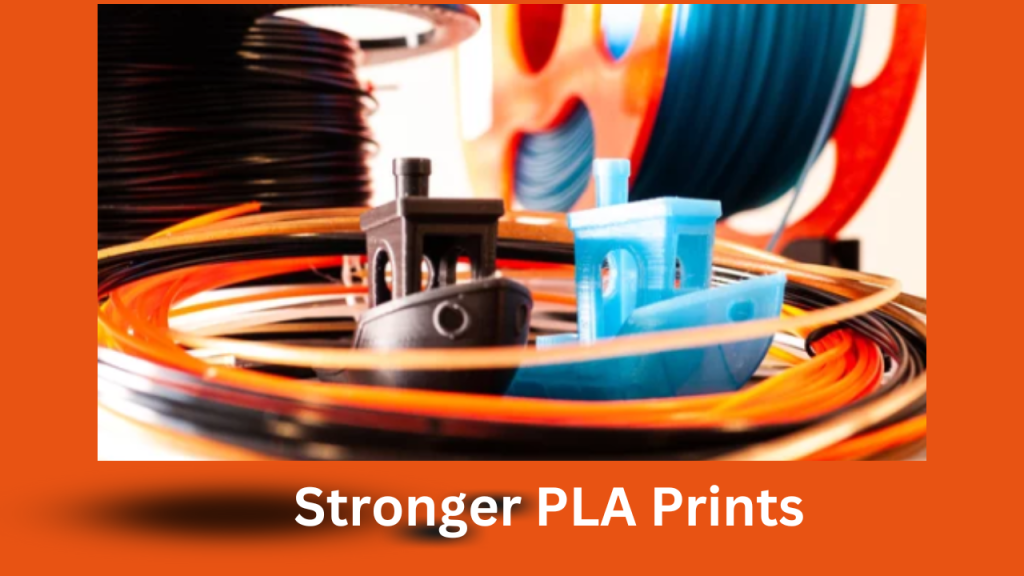If you are into 3D printing, you could be wondering how to make PLA prints stronger. When it comes to 3D printing, one of the common concerns is the strength and durability of the printed objects.
While PLA (polylactic acid) is a popular filament choice for its ease of use and affordability, it can sometimes result in prints that are not as strong as desired. Thankfully, there are several techniques and considerations that can be employed to enhance the strength of PLA prints.
In this discussion, we will explore some tips and strategies to make your PLA prints stronger.
Understanding PLA Strength
Before diving into the tips, let’s first address the question: “Are 3D printed parts strong?” The answer is: it depends. While stiffest 3d printing material, their strength can vary based on several factors such as design, infill density, improve layer adhesion in 3d prints, and post-processing techniques for stronger prints. By implementing the following tips, you can significantly optimize design for strength.
Optimize Your Design
Design plays a crucial role in determining the strength of 3D printed parts. To enhance the overall strength, consider the following design principles:
Avoid sharp corners
Sharp corners can act as stress concentrators, making the part more prone to failure. Instead, incorporate rounded or filleted corners in your design.
Add fillets to vertical walls
Adding fillets (rounded edges) to vertical walls improves the overall strength by distributing the stress more evenly.
Optimize wall thickness
You can also increase infill density for stronger prints. Design walls to be thick enough to provide structural integrity, but not unnecessarily thick which can lead to increased print time and material usage.
Increase Infill Density
The infill density determines the internal structure of your print. Higher infill densities result in a more solid and robust object. Consider increasing the infill density for parts that require more strength. However, keep in mind that higher infill densities may lead to longer print times and increased material consumption.
Enhance Layer Adhesion
Layer adhesion is crucial for the overall strength of 3D prints. Poor layer adhesion can result in weak 3d prints and potential failure points. Here are some ways to enhance layer adhesion:
Bed leveling
Ensure that your printer’s bed is properly leveled to achieve consistent layer adhesion.
Print temperature
Experiment with different print temperatures to find the right balance between layer adhesion and filament flow.
Enclosure or heated chamber
Maintaining a consistent temperature throughout the printing process can improve layer adhesion. Consider using an enclosure or a strong 3d printer with a heated chamber for better results.
Post-Processing Techniques
Post-processing techniques can significantly strengthen PLA prints. Consider the following methods:
Acetone smoothing
Acetone vapor can smooth the surface of PLA prints, improving their overall strength.
Epoxy coating
Applying a thin layer of epoxy resin to the finished print can add an extra layer of strength and durability.
Fiber reinforcement
Embedding fibers such as carbon fiber or fiberglass into the print can greatly enhance its strength. Reinforcing 3d printed parts can improve the overall strength of your product.
Experiment with Stronger Filaments
While PLA is widely used for its ease of use and versatility, there are other stronger filaments for 3d printing available that offer even greater strength. Consider exploring materials like PETG, ABS, or nylon for applications that require stronger prints. These materials offer higher impact resistance and better mechanical properties compared to PLA.
With the right techniques and considerations, you can significantly enhance the strength of your PLA prints. By optimizing your design, increasing infill density, improving layer adhesion, and exploring post-processing techniques, you can create 3D printed objects that are not only aesthetically pleasing but also strong and durable.
To ensure you have strong 3d printing materials, don’t be afraid to experiment with different filaments to find the perfect balance between strength and printability. With practice and patience, you’ll be able to create strong 3D prints that meet your specific needs.
How strong are 3d printed parts? Remember, the strength of your 3D prints is influenced by a combination of factors, so it’s important to consider each aspect carefully. By implementing these tips and techniques, you’ll be well on your way to creating robust and reliable 3D printed objects.



